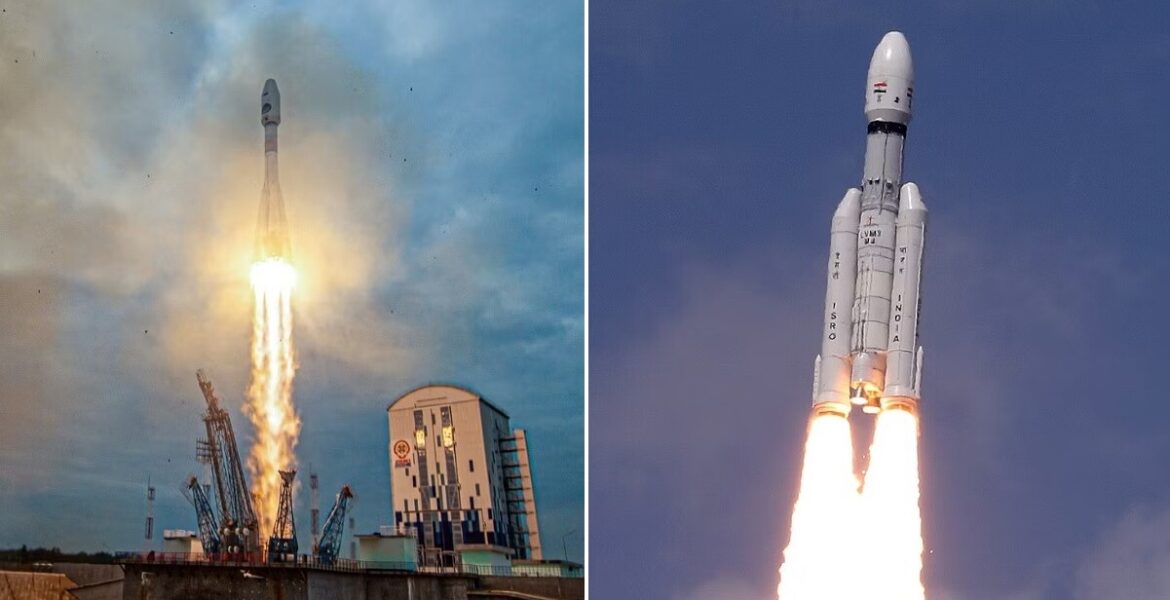Almost a month after India’s Chandrayaan-3 mission to the moon began on 14 July, Russia launched on Friday its own moon-landing rocket — reportedly its first in 47 years, which is expected to land on August 21, two before Chandrayaan, even though the latter reached the lunar orbit on 5 August, much before Luna-25 was even launched.
Chandrayaan-3 is expected to perform its landing attempt on 23 August.
Why does it seem like Indian missions take longer to reach their interplanetary destination as compared to other countries’ missions? The answer lies not precisely in engineering but more in fuel. As a result, India can save costs to a great degree compared to similar missions.
The Print explores this.
The situation is reminiscent of the 2013-2014 Martian launch season, when Indian Space Research Organisation (ISRO’s) Mangalyaan launched on 5 November 2013 and reached Mars orbit on 24 September 2014, while NASA’s Atlas V (Mars Atmosphere and Volatile Evolution or MAVEN) launched on 18 November 2013, and entered Martian orbit on 21 September 2014.
Raising orbits
When launching anything into space, every gram of both payload and rocket affects the fuel it needs to carry. Owing to ISRO’s limited budget when compared to other space agencies, all missions are engineered at costs as low as possible to keep them running.
Indian launch vehicles such as PSLV (Mangalyaan), GSLV, and LVM3 (Chandrayaan-2, 3) are much smaller in size and volume than Atlas V or Russian space agency Roscosmos’s Soyuz (Luna missions).
Atlas V can carry 18,850 kg to a low earth orbit (LEO) and 8,900 to a geosynchronous orbit (GTO or geostationary orbit). By comparison, PSLV, which brought Mangalyaan, can lift 3,800 kg to LEO and 1,200 kg to GTO.
While Atlas V could fly directly to Mars, the PSLV had to undergo a series of orbit-raising manoeuvres around Earth. This conserves fuel by utilising the earth’s gravity to increase height, thus, climbing higher and higher in subsequent orbits, eventually reaching high enough to break away from the earth’s gravity.
This is why MAVEN reached Martian orbit earlier, despite launching after Mangalyaan, which took ten days to raise its orbit and break away to Mars on 30 November. By contrast, MAVEN exited Earth orbit immediately upon launch on 18 November, shooting towards Mars at a higher speed than Mangalyaan.
This is similar to what is happening to Luna-25 and Chandrayaan-3 but at the other end of the journey.
Lowering orbits
Luna-25 is a lunar lander scheduled to land near the lunar South Pole. It launched on 10 August UTC/11 Aug IST, five days after Chandrayaan-3 had begun to orbit the moon. The Indian craft, meanwhile, had performed five orbit-raising manoeuvres around Earth.
The Indian spacecraft has a propulsion module, which carries fuel and is responsible for manoeuvring the craft into the proper orbit — a 100km circular one around the moon — to begin descent onto the lunar surface.
Once again, the propulsion module will perform a series of five orbits lowering manoeuvres at the lunar orbit to consume fuel at launch. It entered a highly elliptical orbit on 5 August, after which two manoeuvers were performed on 6 August and 9 August, respectively. Two more will be performed on 14 August and 20 August, respectively. After that, the lander module is scheduled to separate, performing two burns before landing on the surface on 23 August.
Meanwhile, the Russian craft will enter a 100km circular orbit around the moon on 16 August, orbiting the moon until the 21st of the month, when it is expected to perform a soft landing.


